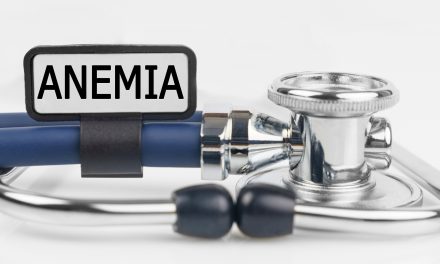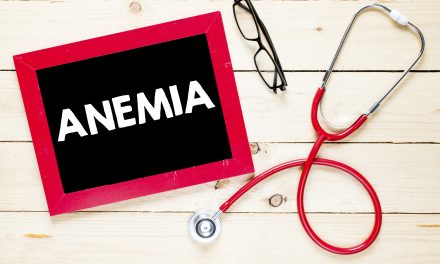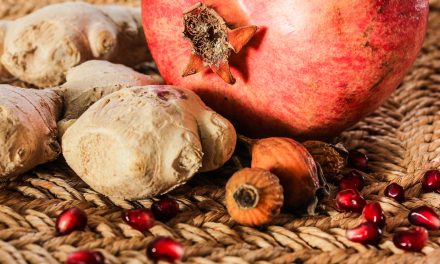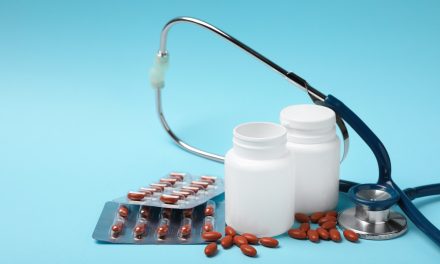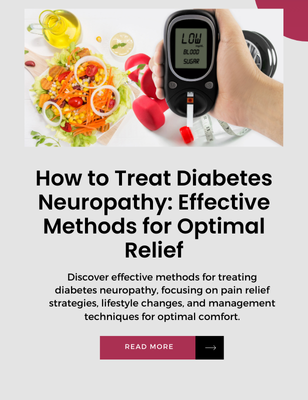Anemia is a prevalent condition among the elderly population, characterized by the body’s lack of enough healthy red blood cells to carry adequate oxygen to tissues. Addressing anemia is crucial because it can lead to a significant reduction in the quality of life, causing fatigue and impairing overall health. In elderly individuals, anemia is commonly multifactorial, with causes ranging from nutritional deficiencies to chronic diseases and medication side effects.
Elderly individuals suffering from anemia may experience symptoms that can easily be overlooked as normal signs of aging. These include fatigue, weakness, pale skin, chest pain, and shortness of breath, amongst others. To accurately diagnose anemia, healthcare providers rely on a comprehensive approach, including complete blood counts and other diagnostic tests. Following diagnosis, treatment plans are tailored to the individual, often involving a combination of lifestyle modifications, diet improvements, and medical treatment, depending on the underlying causes.
Prevention plays a key role in managing anemia in the elderly, with strategies focusing on adequate nutrition, regular check-ups, and managing chronic conditions effectively. It is essential for caregivers and family members to be attuned to the signs of anemia and the necessity for prompt medical intervention. With advancements in research, new therapies continue to emerge, providing hope for improved management of anemia in the elderly population.
Key Takeaways
- Anemia in the elderly can decrease quality of life and is often caused by multiple factors.
- Diagnosis involves recognizing symptoms and conducting tests; treatment varies by individual.
- Prevention is crucial, including nutrition and managing chronic conditions.
Understanding Anemia in the Elderly
Anemia is a medical condition where the blood lacks enough healthy red blood cells or hemoglobin, which is crucial for transporting oxygen to body tissues. In the elderly, anemia is often multifactorial due to physiological changes, age-related diseases, and nutritional deficiencies.
Etiology: The common causes of anemia in the elderly include:
- Chronic disease: Conditions such as renal insufficiency or inflammation can impair red blood cell production.
- Nutritional deficiencies: Insufficient intake of iron, vitamin B12, or folate is a leading cause.
- Gastrointestinal blood loss: Medications like aspirin or anticoagulants can increase risk.
Symptoms can vary but often include fatigue, weakness, paleness, or shortness of breath. It’s imperative to recognize these signs early as anemia can exacerbate the impact of other health issues in the elderly.
Diagnosis: Accurate diagnosis utilizes several tests:
- Complete blood count (CBC) to check levels of red blood cells and hemoglobin.
- Serum ferritin and vitamin levels to determine nutritional causes.
Prevalence: Anemia affects about 10% of individuals over 65 years old. Awareness is key, as it is sometimes underdiagnosed due to the attribution of symptoms to the aging process alone.
Treatment: Treatment depends on the specific cause and may include dietary adjustments, supplements, medications, or management of underlying conditions. Regular monitoring is essential to adjust treatment plans as needed.
Common Causes of Anemia in the Elderly
Anemia in elderly individuals often results from various factors that decrease red blood cell production or increase red blood cell loss. Understanding these causes is crucial for appropriate management.
Nutritional Deficiencies
- Iron: A vital component for hemoglobin production, iron deficiency is a leading cause of anemia. Elderly patients may lack iron due to poor diet or decreased absorption.
- Vitamin B12 & Folate: These nutrients are essential for DNA synthesis in red blood cells. Deficiencies can occur from inadequate dietary intake or malabsorption issues.
Chronic Conditions
- Kidney Disease: Impaired kidney function in the elderly can lead to decreased production of erythropoietin, a hormone critical for red blood cell production.
- Inflammatory Diseases: Conditions like rheumatoid arthritis can interfere with red blood cell production due to chronic inflammation.
Medication Side Effects
- Antibiotics and Chemotherapeutics: These can cause myelosuppression or hemolysis, leading to decreased red blood cell counts.
- Nonsteroidal Anti-Inflammatory Drugs (NSAIDs): Commonly used for pain, NSAIDs can sometimes cause gastrointestinal bleeding, contributing to anemia.
Symptoms of Anemia to Recognize
Identifying anemia in the elderly depends on noticing specific physical signs and cognitive effects that are indicative of the condition.
Physical Signs
Elderly individuals with anemia often exhibit pale or yellowish skin due to decreased red blood cell count or hemoglobin. They may experience fatigue and weakness that is disproportionate to their level of activity. Signs also include shortness of breath and chest pain, especially when anemic patients engage in physical activity. It’s not uncommon for them to have cold hands and feet, signaling poor circulation. Other physical signs include:
- Rapid or irregular heartbeat
- Dizziness or lightheadedness
- Headaches
Cognitive Effects
Cognitive effects of anemia in the elderly might involve difficulty concentrating and a noticeable decrease in cognitive performance. They may display signs of confusion or disorientation, which can often be mistaken for age-related dementia. Studies indicate a correlation between anemia and the acceleration of cognitive decline. Observable symptoms include:
- Memory issues
- Reduced attention span
- Slowed processing speed
Diagnostic Tests for Anemia
Elderly individuals suspected of having anemia will typically undergo several diagnostic tests to confirm the diagnosis and determine the underlying cause.
Complete Blood Count (CBC)
The primary test for diagnosing anemia is the Complete Blood Count (CBC) which measures various components of the blood, including:
- Hemoglobin (Hgb) levels: A key indicator of anemia, low hemoglobin suggests reduced oxygen-carrying capacity.
- Hematocrit (Hct) percentage: Measures the proportion of red blood cells in the blood.
- Red Blood Cell (RBC) count: Provides a count of these cells in the bloodstream.
Vitamin and Mineral Levels
Since vitamin and mineral deficiencies can lead to anemia, specific tests are needed to determine levels of:
- Vitamin B12 and Folate: Deficiencies in these are tied to megaloblastic anemia.
- Iron: Low levels may indicate iron-deficiency anemia. This includes:
- Serum Iron: A measure of the amount of iron in the blood.
- Ferritin: Reflects the body’s iron stores.
Bone Marrow Examination
In cases where the above tests do not determine the cause of anemia, or if more serious conditions are suspected, a Bone Marrow Examination might be performed. This includes:
- Bone Marrow Aspiration: Withdrawal of a liquid marrow sample.
- Bone Marrow Biopsy: Removal of a small amount of marrow tissue, typically from the hip bone.
Lifestyle Adjustments for Managing Anemia
Elderly individuals can manage anemia effectively through specific lifestyle changes, particularly in their diet and physical activity levels.
Dietary Changes
For elderly patients with anemia, iron-rich foods are a crucial component of their diet. A table of food types and examples includes:
| Food Type | Examples |
|---|---|
| Meat | Beef, chicken liver, turkey |
| Seafood | Oysters, clams, sardines |
| Vegetables | Spinach, kale, sweet potatoes |
| Legumes | Lentils, chickpeas, beans |
| Fruits | Dried apricots, prunes, figs |
| Iron-Fortified Foods | Cereals, breads, pastas |
Additionally, enhancing iron absorption is crucial and can be achieved by incorporating foods high in vitamin C, such as citrus fruits and bell peppers, with iron-rich meals. Elderly patients should also be advised to limit intake of substances that hinder iron absorption, like calcium-rich foods and drinks, tea, and coffee close to iron-rich meals.
Physical Activity
Moderate physical activity can contribute to improving anemia by enhancing overall health, stimulating appetite, and promoting better sleep. Exercise recommendations for elderly individuals should be tailored to their capabilities and might include:
- Gentle walking
- Swimming
- Light aerobic exercises, like chair exercises
- Stretching and balance activities such as yoga or tai chi
It is essential for these individuals to consult healthcare providers to ensure their activity plan is suitable and to avoid overexertion. Regular physical activity, despite its gentle nature, helps with the management of anemia by promoting a healthier lifestyle.
Medical Treatments for Anemia
The management of anemia in the elderly can involve a variety of medical interventions tailored to the underlying cause of the condition.
Supplements and Medications
Elderly patients with iron-deficiency anemia may be prescribed iron supplements to increase red blood cell production. Doses vary, but typically, 150 to 200 milligrams of elemental iron per day is recommended. Vitamin B12 or folate supplements can be effective for anemia caused by a deficiency in these nutrients. Where anemia is a result of chronic disease, erythropoiesis-stimulating agents (ESAs) may be administered to stimulate the bone marrow to produce more red blood cells.
Blood Transfusions
For severe anemia or when rapid correction is required, blood transfusions can replenish red blood cell levels. This treatment involves the transfusion of red blood cells from a donor, matching the patient’s blood type. It is a common procedure and can quickly improve symptoms, such as fatigue and weakness, associated with anemia.
Stem Cell Therapy
In cases where the bone marrow is failing to produce red blood cells effectively, stem cell therapy could be considered, particularly for aplastic anemia or anemias due to bone marrow diseases. Stem cell transplants involve the replacement of the diseased bone marrow with healthy stem cells that can restore blood cell production. This procedure requires a suitable donor and comes with serious risks that must be carefully weighed.
Preventing Anemia in Elderly Individuals
Preventing anemia in the elderly hinges on early detection, appropriate dietary adjustments, and management of underlying chronic conditions.
Regular Screenings
Regular screenings are essential for early identification of anemia. Elderly individuals should undergo complete blood counts (CBC) annually to monitor hemoglobin levels and red blood cell count. Physicians may recommend more frequent testing if an individual has a history of anemia or is displaying symptoms.
Dietary Planning
A diet rich in iron, vitamin B12, and folate is key to preventing anemia.
Iron: Incorporate foods like red meat, beans, and fortified cereals.
- Red meat: 2-3 servings per week
- Beans: 3-4 servings per week
- Fortified cereals: daily
Vitamin B12: It is mainly found in animal products and fortified foods.
- Dairy: 1-2 servings per day
- Fish: 2 servings per week
Folate: Green leafy vegetables and citrus fruits are good sources.
- Spinach: a handful daily
- Oranges: 1-2 per day
Managing Chronic Diseases
Chronic diseases like kidney disease or diabetes can contribute to anemia. It is crucial that these conditions are well-managed. This may involve:
- Regular medication as prescribed by healthcare providers
- Monitoring by specialists for signs of anemia related to chronic disease
When to Seek Medical Help
Elderly individuals must be vigilant in monitoring their health status for any signs of anemia. Early detection and medical intervention are crucial.
Warning Signs
- Fatigue: Unusual and persistent tiredness that does not improve with rest.
- Paleness: Notable pallor, especially in the gums, nail beds, and eyelids.
- Heart Issues: Rapid or irregular heartbeat upon exertion.
- Breathlessness: Shortness of breath during activities that were once easy.
- Cognitive Changes: Difficulty concentrating or confusion.
Individuals presenting with these symptoms should consult a physician promptly.
Consulting a Hematologist
- Recurring Symptoms: If initial treatments are ineffective or anemia symptoms recur.
- Complex Cases: When anemia is accompanied by other hematological disorders.
In these instances, the expertise of a hematologist can provide more specialized assessment and management.
Caregiver and Family Support
Effective management of anemia in the elderly often involves the close support of caregivers and family members. A comprehensive approach includes educating those involved and implementing practical daily care strategies.
Education and Awareness
It is crucial for caregivers and family members to understand anemia and its potential impact on the elderly.
- Understanding Anemia:
- Anemia is a condition where there is a deficiency of red blood cells or hemoglobin in the blood.
- Common symptoms include fatigue, weakness, and shortness of breath.
- Recognizing Symptoms:
- Early detection is vital. Caregivers should watch for signs of paleness, fatigue, or a decline in mental acuity.
- Role of Diet:
- Certain nutrients, specifically iron, vitamin B12, and folate, are key in managing anemia.
- Importance of Communication:
- Caregivers must maintain close communication with healthcare professionals to manage the condition effectively.
Daily Care Strategies
Ensuring daily care strategies are in place is essential for managing anemia in the elderly.
- Dietary Management:
- Integrate iron-rich foods like spinach, lentils, and red meat into meals.
- Include vitamin C in the diet to enhance iron absorption.
- Medication Adherence:
- Strictly monitor adherence to prescribed medications and supplements.
- Physical Activity:
- Encourage gentle exercise to stimulate appetite and improve overall well-being, but take care not to overexert.
- Regular Check-ups:
- Schedule regular blood tests to monitor hemoglobin levels and adjust treatment as necessary.
Each action by caregivers and family helps maintain the health and quality of life for elderly individuals with anemia.
New Research and Therapies
Recent advancements in anemia treatment for the elderly have shown promise, incorporating both medical interventions and nutritional strategies. These developments aim to address the complexities associated with aging-related anemia.
Advancements in Treatment
Researchers have identified new pharmaceutical compounds that show efficacy in stimulating erythropoiesis, the production of red blood cells. An example is the use of hypoxia-inducible factor prolyl hydroxylase (HIF-PH) inhibitors, which can help manage anemia associated with chronic kidney disease often seen in elderly patients. Clinical trials have underscored the potential benefits of such drugs in improving hemoglobin levels and reducing the need for blood transfusions.
- HIF-PH Inhibitors:
- Improve hemoglobin levels
- Decrease transfusion frequency
Additionally, gene therapy has emerged as a prospective avenue. Gene editing tools like CRISPR/Cas9 are being tested to correct genetic abnormalities that cause certain types of anemia, though this is still largely in the experimental phase.
Emerging Nutritional Insights
The role of nutrition in the management of anemia has come under scrutiny, leading to new dietary recommendations for the elderly. For instance, the importance of vitamin C in enhancing iron absorption is now better understood, prompting dietary adjustments that could mitigate anemia.
Key Nutrients for Anemia Management:
- Iron: Found in lean meats, beans, and iron-fortified cereals.
- Vitamin C: Citrus fruits, tomatoes, and peppers aid in iron absorption.
- Vitamin B12 and Folic Acid: Necessary for red blood cell production, prevalent in animal products and fortified grains.
New studies also suggest that certain elderly populations may benefit from the targeted use of supplements like intravenous iron, which can be more effective for some individuals who do not respond well to oral iron supplements due to gastrointestinal side effects.
Frequently Asked Questions
This section addresses common inquiries regarding the management and treatment of anemia in elderly individuals, focusing on dietary changes, supplementation, and the impact of other health conditions.
What dietary changes can help increase iron levels in the elderly?
Increasing the intake of iron-rich foods, such as lean red meat, poultry, fish, legumes, spinach, and fortified cereals, can help improve iron levels.
What supplements may be recommended for treating anemia in the elderly?
Health professionals often suggest iron supplements to combat iron-deficiency anemia. Additionally, vitamin C can increase iron absorption, while vitamin D and folic acid can support overall blood health.
Can B12 deficiencies contribute to anemia in older adults, and how is it treated?
B12 deficiencies can indeed lead to anemia. Treatment typically involves dietary adjustments to include more B12-rich foods, such as meat, fish, dairy, and fortified foods, or possibly B12 injections or oral supplements.
How does chronic kidney disease affect anemia in the elderly, and what are the treatment options?
Chronic kidney disease can lead to anemia due to a lack of erythropoietin, a hormone that stimulates red blood cell production. Treatment may include erythropoiesis-stimulating agents, iron supplements, or blood transfusions.
What role does chronic inflammation play in causing anemia in the elderly, and how is it managed?
Chronic inflammation can interfere with iron metabolism and erythropoiesis, leading to anemia. Managing underlying inflammatory conditions and considering erythropoiesis-stimulating medications can provide relief.
How important is managing underlying chronic conditions in the treatment of anemia in elderly patients?
Treating chronic conditions such as diabetes, heart disease, or renal failure is vital, as these can exacerbate anemia. Effective management of these diseases can improve anemia symptoms and overall health.
Conclusion
In conclusion, managing anemia in the elderly requires a comprehensive approach that considers the unique health needs of this population. Effective strategies include identifying and addressing underlying causes, such as nutritional deficiencies or chronic conditions, and developing personalized treatment plans. Close collaboration with healthcare professionals, regular monitoring, and promoting a balanced diet rich in iron and essential nutrients are crucial for effectively managing anemia in the elderly and supporting their overall health and well-being.










